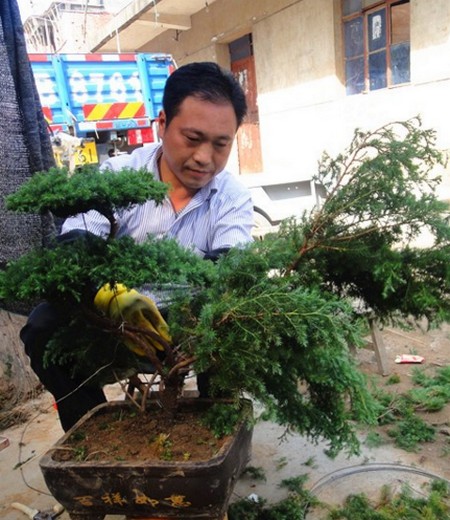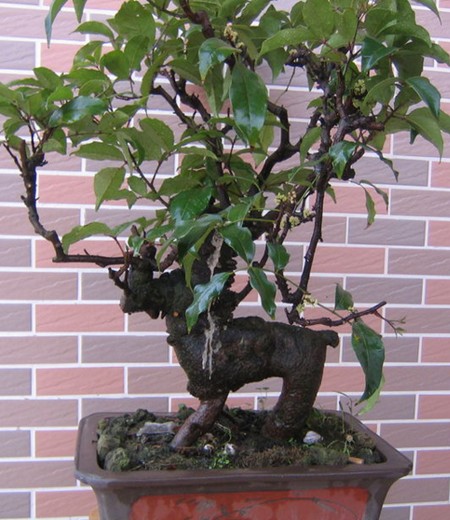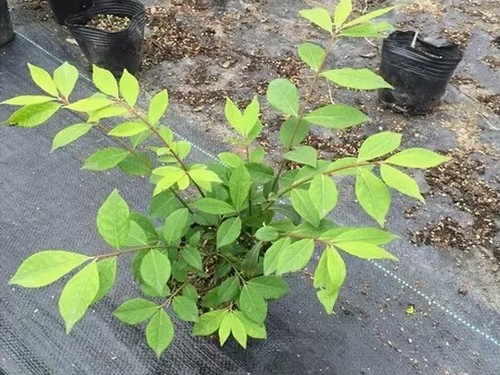Transplanting technique of Pine Bonsai
People often say an old saying: people move, trees move to death. Therefore, it is necessary to pay more attention to the transplanting of big trees, otherwise it would be a pity to die in the process of transplanting. In the case of pine trees, the transplanting of large pine trees is also particularly important.

The main results are as follows: 1. pine tree transplantation is generally carried out before the pine tree germinates in early spring, but not in the permafrost period. low temperature will affect the resurrection of the root system.
2. When transplanting, you should first dig holes in the sites that need to be planted, then dig trees, and bring soil balls when digging trees.
3. The size of the soil ball is generally 5-6 times of the bottom diameter of the tree, and tied up with grass rope to avoid loosening the soil ball.
4. Larger trees need to be hoisted by cranes, and the loading capacity should not exceed 2. The bark should not be damaged when transplanting, and the protective measures should be kept up with.
5. The retention time of pine trees before burrowing should be shortened as far as possible, so as to avoid evaporation of leaves and loss of a large amount of water, thus affecting the survival rate.
6. If the root system is damaged, it should be cut with sharp scissors, not torn.
7. If possible, soak the root system with rooting powder solution, which can improve the survival rate.
8. when planting, you should master the depth, which should be based on the original depth, not too deep, otherwise it will affect the survival rate; when planting, you should fill half of the soil first, then fill the other half of the soil, and then fill the other half of the soil, and finally be solid.
9. Immediately after planting, water is watered thoroughly, and leaves and branches are sprayed with clean water to increase the humidity of the air and facilitate the restoration of plant vitality.
10. Bracket support should be set up to avoid wind lodging and affect rooting. The bracket is generally supported by three sticks or bamboo stalks. But pay attention to the use of soft cloth or other things to protect the bark where the stick or bamboo pole is tied with the pine tree, otherwise the pine tree will be shaken by the wind and the bark will be damaged and affect the survival rate.
11. Water the second time after 2 days, the third time should be 3 ℃ 5 days, the topsoil should be watered thoroughly, and spray water once a day when the temperature is higher than 20 min. After one month, you can reduce the times of spraying or stop spraying.
12. try not to apply fertilizer in that year, and it is not too late to apply it again in the next spring.
When the newly planted trees are fully watered for the first time, look at the weather conditions and adopt the principle of "no dry, no watering, dry and wet". It is strictly forbidden to spray water on the trunk wrapped in the grass rope every day after long-term flooding into the summer, so as to keep the grass rope moist all the time, so as to ensure the moisturizing and cooling of the trunk for a small number of key positions and important trees, key protective measures should be taken, that is, shading nets should be set up above the tree crown to reduce the temperature of the small environment, reduce water evaporation and create an environment conducive to the restoration of growth of newly planted trees.
Time: 2019-05-25 Click:
- Prev

Bonsai planting technique of Zanthoxylum nitidum
Zanthoxylum nitidum is a woody vine of Rutaceae and Zanthoxylum bungeanum. There are hooked prickles on both sides of stem, branch, leaf axis and leaflet midvein. The main root of Zanthoxylum nitidum is stout, with many branches, the outer skin of the root is yellow, the endothelium is sulfur yellow, soft, the taste is very bitter, and the tongue is numb. It is appropriate to choose sunny, good drainage.
- Next

Cultivation techniques of bonsai of Euphorbia angustifolia
The leaves of the flame spear are fiery red in late autumn and tall and straight in the rest of the season. it is a very beautiful ornamental plant with colorful leaves in autumn and winter. With its excellent bright red leaves in autumn and lasting for several months, it has been rated as one of the top-grade seedlings in the garden industry. The dense crown spear is full and neat in shape and resistant to pruning.
Related
- Fuxing push coffee new agricultural production and marketing class: lack of small-scale processing plants
- Jujube rice field leisure farm deep ploughing Yilan for five years to create a space for organic food and play
- Nongyu Farm-A trial of organic papaya for brave women with advanced technology
- Four points for attention in the prevention and control of diseases and insect pests of edible fungi
- How to add nutrient solution to Edible Fungi
- Is there any good way to control edible fungus mites?
- Open Inoculation Technology of Edible Fungi
- Is there any clever way to use fertilizer for edible fungus in winter?
- What agents are used to kill the pathogens of edible fungi in the mushroom shed?
- Rapid drying of Edible Fungi

